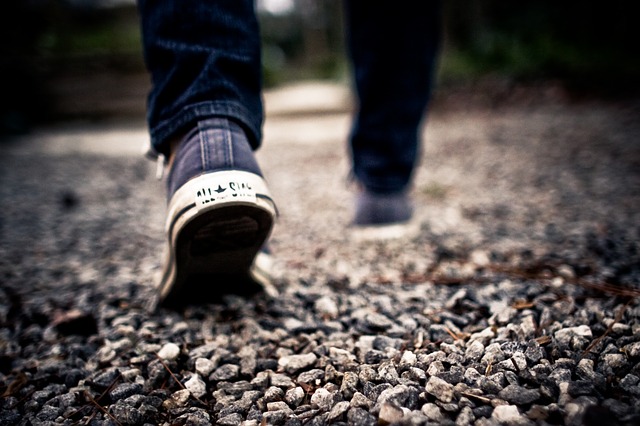 The Last Great Walk: The True Story of a 1909 Walk from New York to San Francisco, and Why it Matters Today by Wayne Curtis
The Last Great Walk: The True Story of a 1909 Walk from New York to San Francisco, and Why it Matters Today by Wayne Curtis
My rating: 5 of 5 stars
Taking as his point of departure a transcontinental walk by a 70-year-old man over 100 years ago, author Wayne Curtis takes us on a spritely, interdisciplinary walk on the subject of walking itself.
"The Last Great Walk" is only roughly built around the 4,000-mile perambulation of Edward Payson Weston, a competitive walker during a time when such athletes possessed the attention given to NBA stars today. Instead of trying to recreate Weston's walk, Curtis wisely dovetails his chronicle of America's last great walk with essays on the biology, sociology, anthropology, neurology and the psychology of walking.
And a fascinating journey it is. Curtis escorts us from the La-Z-Boy museum in Monroe, Michigan to the great walking cities of the world, and from the present into shadowy prehistory where a group of primates discovered the advantages of bipedalism on the savannahs -- and spread across the world on their own two feet.
Along the way, we meet the archenemy of pedestrianism, the automobile, and survey the century-old struggle between these dichotomous forms of transportation.
Even for those of us who have stepped outside the car door and thrown away the keys, the effects -- primarily deleterious -- of the automobile on our society are surprising. For the most part, Curtis takes great pains to prevent his book from becoming just another pedestrian's screed by maintaining an even tone and allowing the facts, and the scientists and researchers who have uncovered those facts, speak for themselves. But there are times when he cannot hold himself back.
"Automobiles are the Plato's caves of the modern world," he writes. "From them we see only shadows, the rough outlines of our existence. The map of this world is drawn with fat, cartoonish markers rather than finely sharpened pencils. The detailed lines of the etchings around us are lost, replaced with hulking shapes whizzing by at sixty miles per hour, vague and often amorphous forms, save for the haunting and startingly blue Best Buy sign and the inquisitive yellow eyebrows of the McDonald's arches jutting over distant rooftops."
Walking, on the other hand, is not only transportation, but "can also be like the best sort of daydreaming, a way to explore without direction. The art of the long, aimless walk was accorded uncommon respect and attention across the Atlantic in the nineteenth century. The flaneurs -- from the French word for "one who strolls" -- filled a strange ecological and cultural niche."
As we journey on these paths, we discover how walking is fundamental to our health by giving us a sense of place and by challenging not just our muscles but also our minds.
"Being lost is an essential human condition....Abandoning the experience of being lost is like losing our facility for empathy; it's a central part of what made us human, the bedrock upon which both mobility and mind were built," Curtis writes.
I came upon this book only a few months after I rediscovered the joys of bipedalism myself, and it provided me with the rational underpinnings to my subjective experiences. I now understand why time seems to dilate for a walker, and why certain paths, though indirect to my destination, are far more appealing to me.
I also understand why life feels so much richer now that I am a walker, rather than a driver. As anyone who has abandoned their car can tell you, life gradually moves from flat 2D to a fuller three dimensions with the more footsteps you put between you and your car. Curtis explains the neurology and psychology behind this experience, and what we have lost, as individuals and societies, as we have abandoned walking.
Yet Curtis always returns to Weston's great walk across a country burgeoning with prosperity and on the cusp of transitioning to a car culture. In doing so, Curtis makes a solid case for a return to our pedestrian roots, and why it makes sense personally, socially and economically to do so. Which is why Weston's walk still matters today.
View all my reviews
